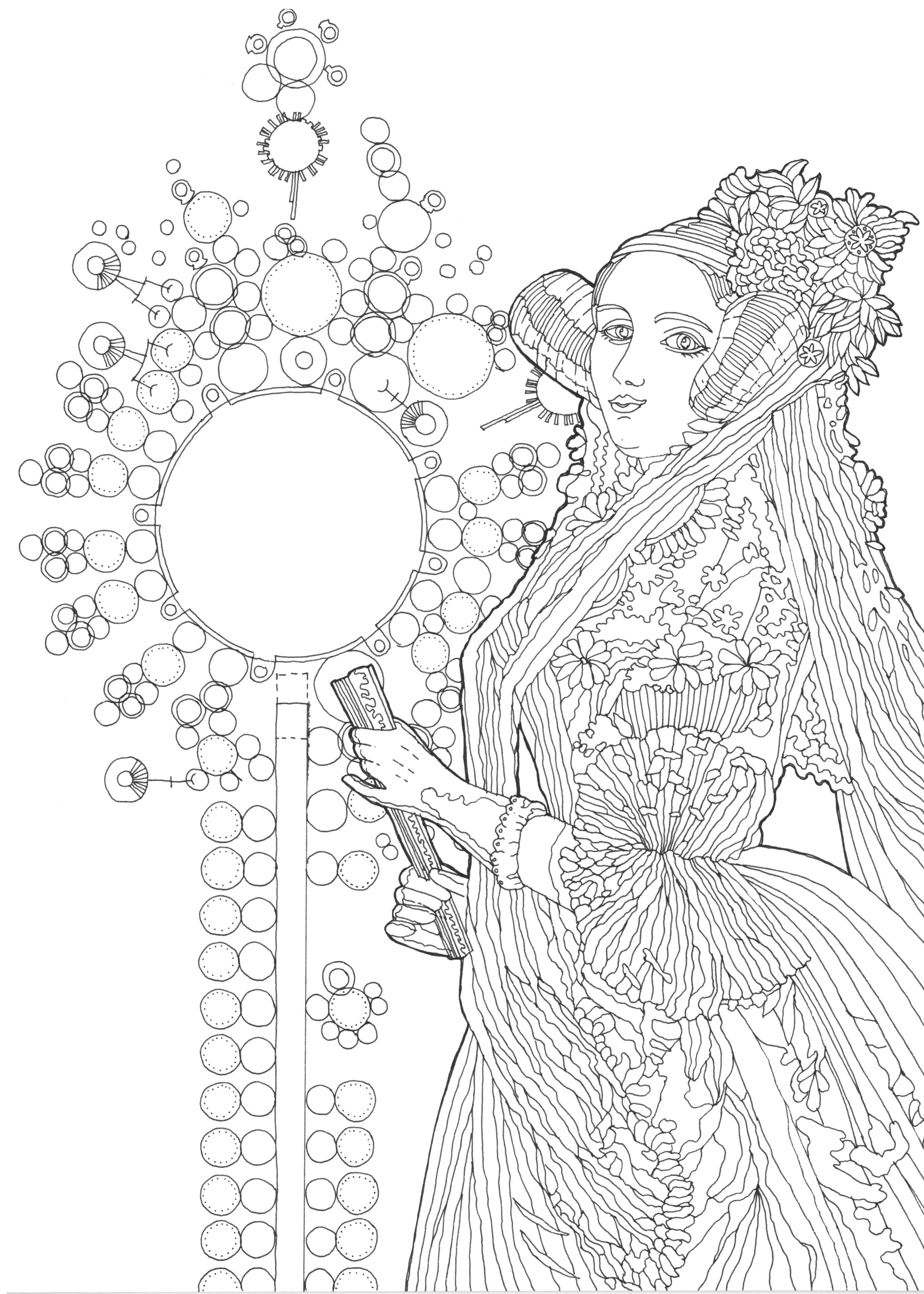Hand-drawn illustration of Ada Lovelace by Jackie Aim, based on a watercolor portrait by Alfred Edward Chalon. Copyright license CC BY-SA 2.0.
I wrote this article as part of a regular series I wrote for the Philadelphia Inquirer called DigitaLit, for which I reported on literature and art projects that lie at the intersection of traditional storytelling and new technologies.
In talking about the idea for her new-media project, Open Source Embroidery, British curator and media researcher Ele Carpenter says the zeitgeist deserves at least some of the credit.
Open Source Embroidery is a kind of socially engaged art experiment that seeks to include as many people as possible and brings together what Carpenter sees as the common elements of embroidery, which has historically been women’s work, and computer programming, an area populated largely by men. When she first became interested in the connections between the two kinds of work, Carpenter taught herself both backstitch (a basic embroidery stitch) and some html. She has altered hats and scarves by stitching them with provocative slogans in html coding, such as “Peace.”
But the main project under the OSE umbrella is a six-sided quilt of 216 hexadecimal colors (so called because the html codes for colors have six digits). Both experienced and beginning needleworkers and computer programmers were invited to contribute hexagonal patches, each embroidered with its html color code. The quilt is on display at the media lab Access Space in Sheffield, England, where Carpenter was an artist in residence this summer.
As for the zeitgeist, well, knitting, embroidery and other needlework are hipper than ever. Carpenter says the “stitch ‘n’ bitch” groups (like quilting bees for the post-Courtney Love crowd) that have popped up in cities all over the United States and the U.K. have helped to make it socially acceptable, if not cool, to do needlework in public. Within such groups needlework patterns are shared freely, and it is common practice to alter an original design to yield a different result.
Likewise, open source software is a labor of love. Programmers spend hours creating software programs not for any financial gain but because they want to make a good product. The source code is made visible and can be altered by other users, meaning the software—like a quilt—is ultimately created as a collaborative effort. Carpenter’s project poses questions about the changing nature of intellectual property in the 21st century.
“What interests me is the emphasis on the process rather than the product,” she told me in an e-mail. “Open source software is free, but usually requires you to pay for technical support, which most people need. So the 'investment’ is not in the software as a product, but in the process of learning how to use it. In patchwork, the production process, advice and support is free, but the final quilt (and the final software) can be sold.”
But it’s not all about being ultramodern. Carpenter calls her experiment an homage to Ada Lovelace, who was born nearly 200 years ago and who worked with Charles Babbage on the Analytical Engine, the first universal computer. He decided to use standard punch cards in the engine, influenced by the Jacquard loom (named after inventor Joseph Marie Jacquard), which was the first machine to use punched-card programming.
Says Carpenter, “Lovelace wrote, 'We may say most aptly that the Analytical Engine weaves algebraical patterns just as the Jacquard Loom weaves flowers and leaves.’”
Don’t you just love it when things come full circle?
